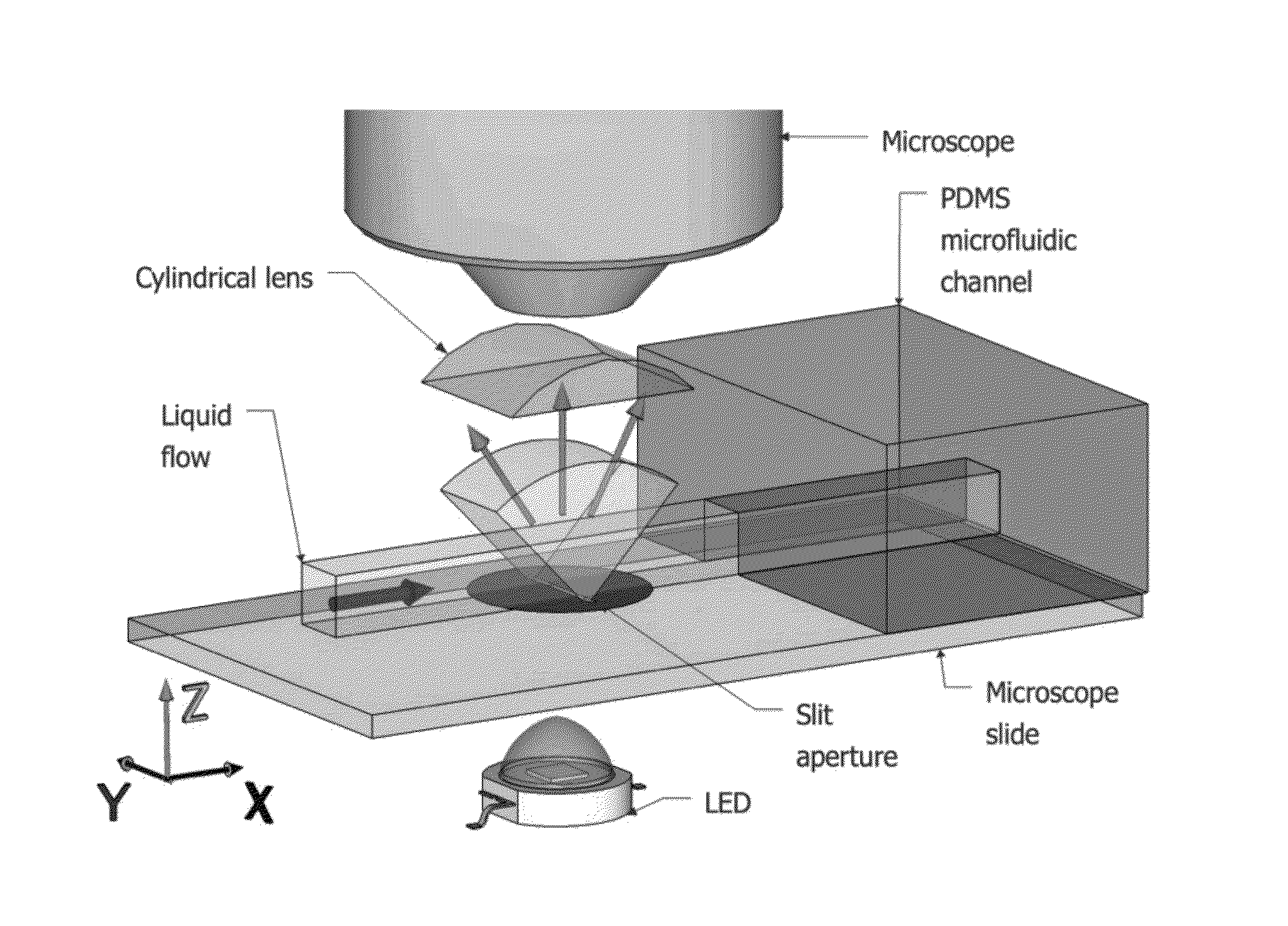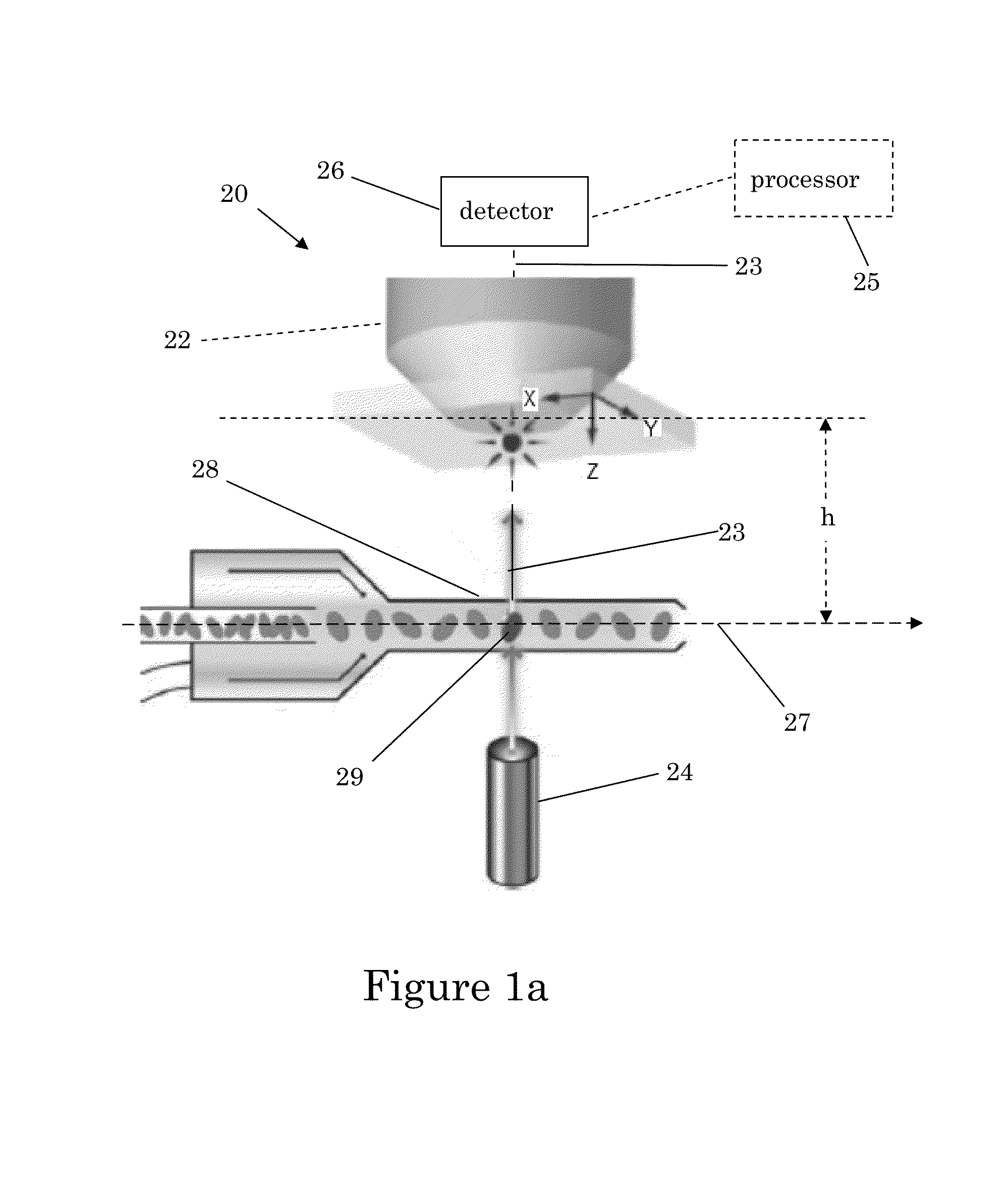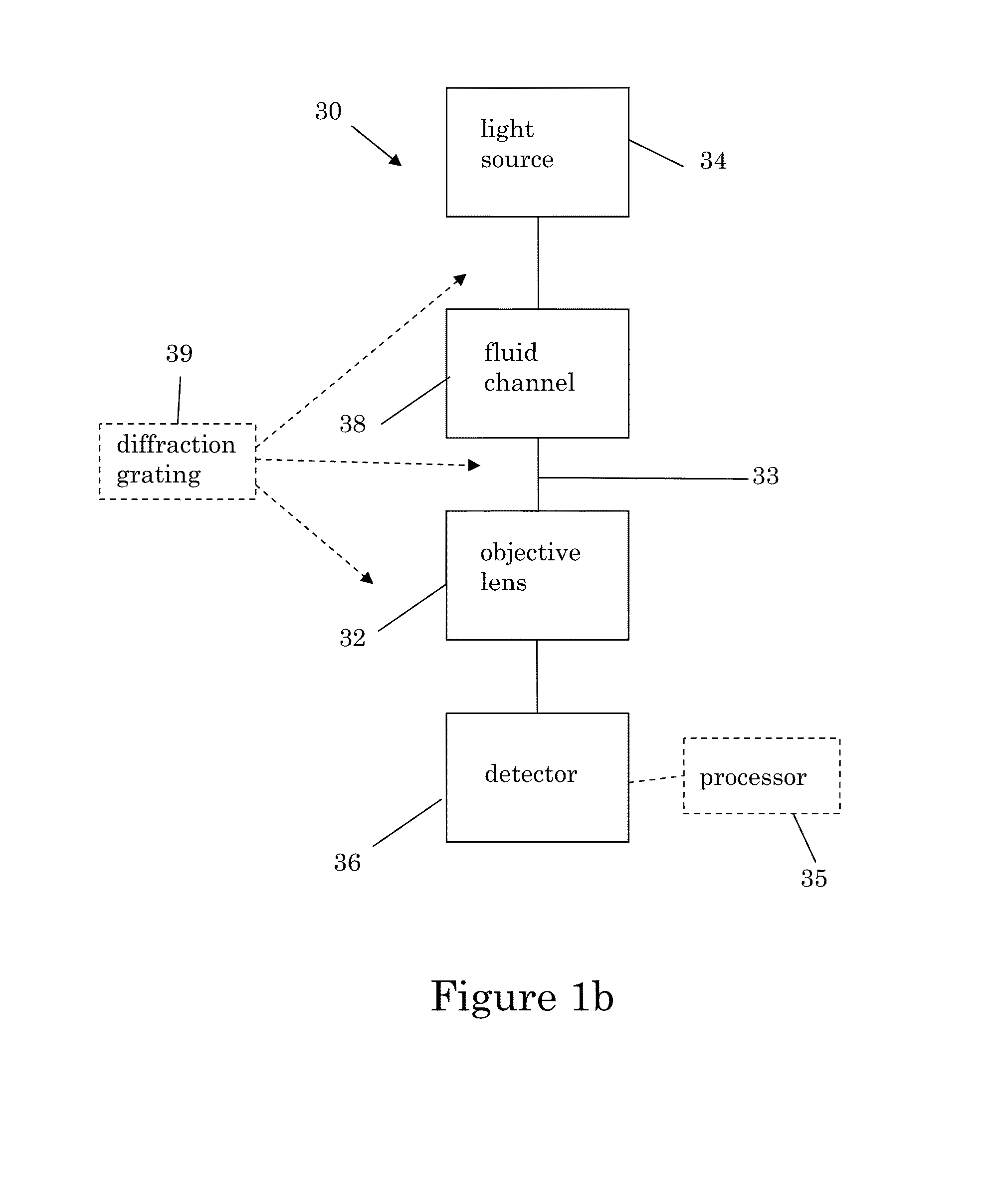Fluid channels for computational imaging in optofluidic microscopes
a fluid channel and computational imaging technology, applied in the field of optofluidic microscopes, can solve the problems of lack of key information, both methods measure only a 2d surface, and limit imaging structures
- Summary
- Abstract
- Description
- Claims
- Application Information
AI Technical Summary
Benefits of technology
Problems solved by technology
Method used
Image
Examples
Embodiment Construction
[0022]The disclosed modifications relate to imaging in optofluidic microscopes (OFM) using a fluid channel. A typical OFM includes three basic parts: an illumination source, a fluid system, and an image detector. The illumination system may use a variety of sources such as sunlight, lasers and LEDs. The detector is typically a CCD sensor although other sensors may be used. The fluid system includes a channel that is etched into a transparent substrate, such as PDMS, which may be bonded directly to the CCD. Input and output ports are then added to the channel to ensure a fluid flow across it.
[0023]FIG. 1a shows a schematic block diagram of an OFM 20. It should be understood that such microscopes may include additional features that are not shown such as a stage, revolving nosepiece with multiple objective lenses, condenser lens, iris, coarse and fine focus and the like. Such aspects are well known in the art. The OFM 20 includes a light source 24 and a detector 26. The OFM 20 may opt...
PUM
 Login to View More
Login to View More Abstract
Description
Claims
Application Information
 Login to View More
Login to View More - R&D
- Intellectual Property
- Life Sciences
- Materials
- Tech Scout
- Unparalleled Data Quality
- Higher Quality Content
- 60% Fewer Hallucinations
Browse by: Latest US Patents, China's latest patents, Technical Efficacy Thesaurus, Application Domain, Technology Topic, Popular Technical Reports.
© 2025 PatSnap. All rights reserved.Legal|Privacy policy|Modern Slavery Act Transparency Statement|Sitemap|About US| Contact US: help@patsnap.com



